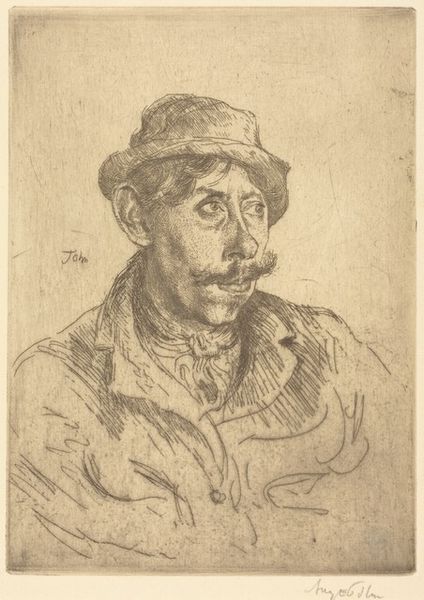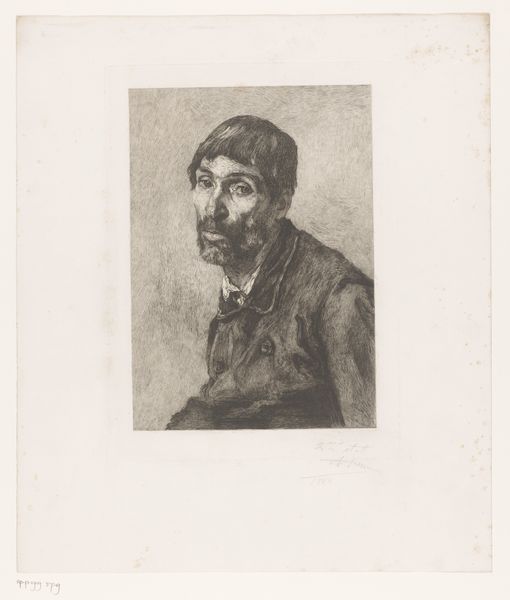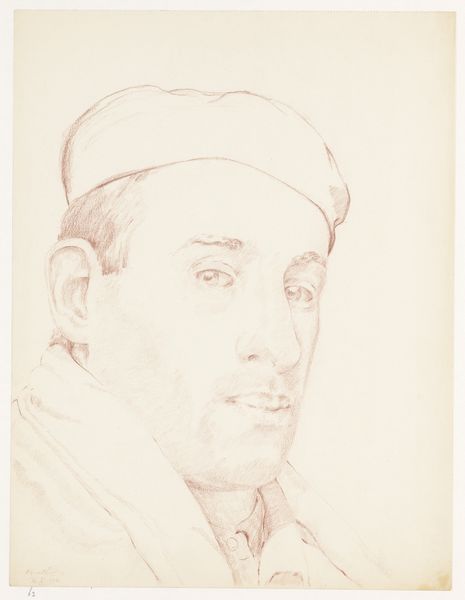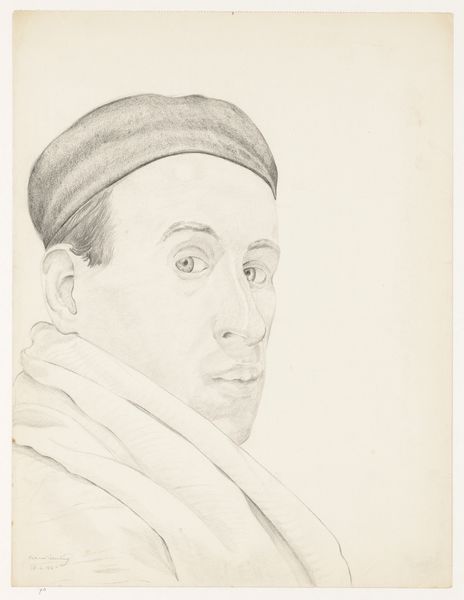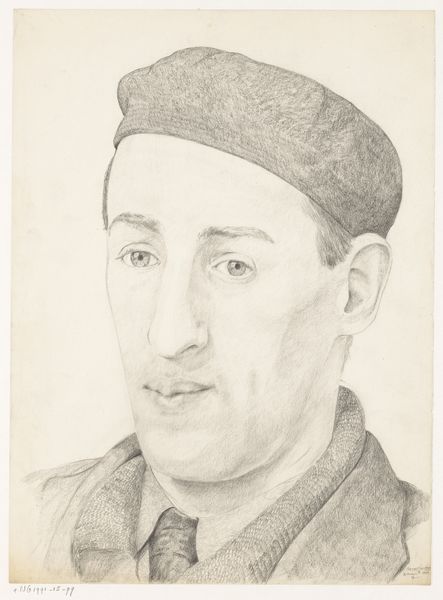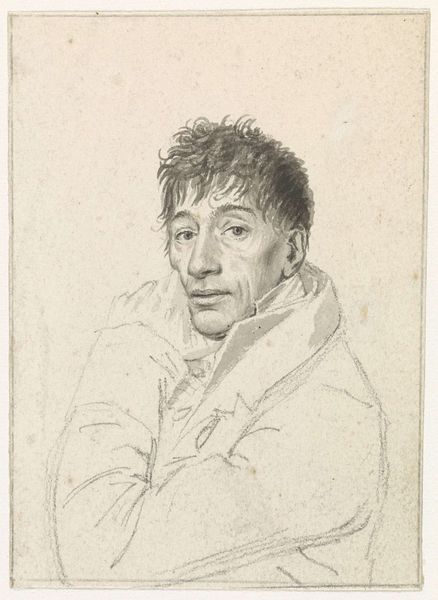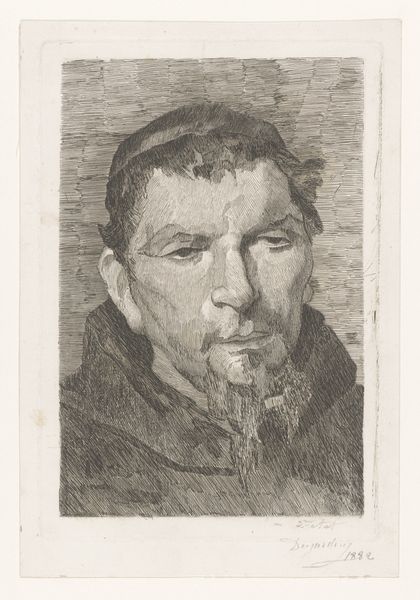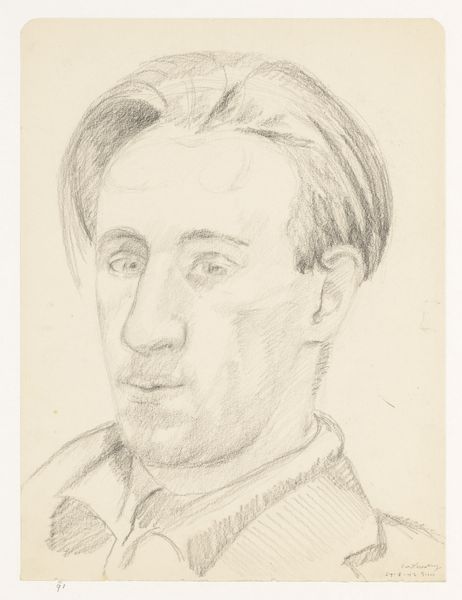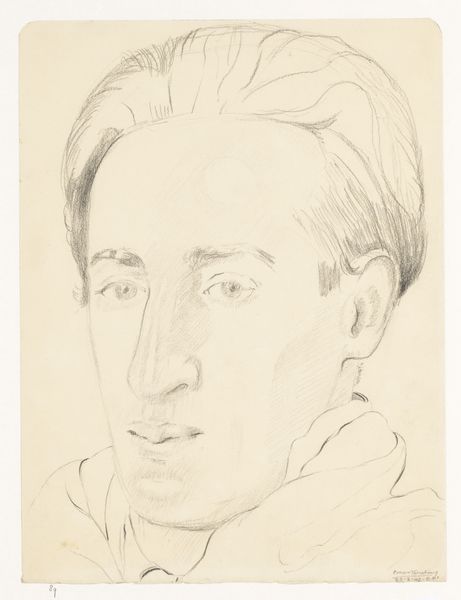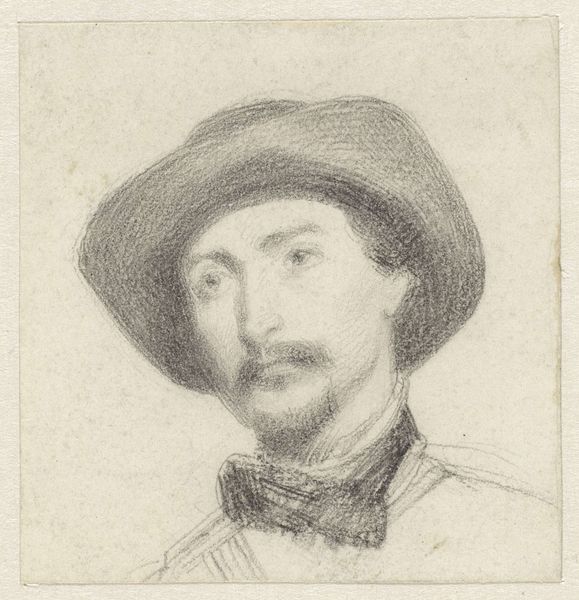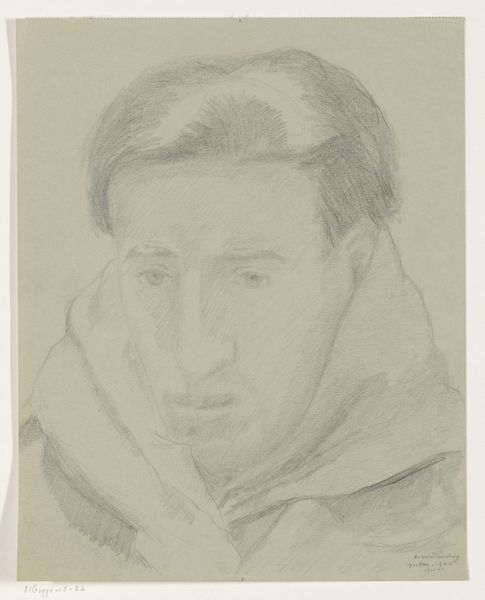
drawing, graphite, charcoal
#
portrait
#
drawing
#
self-portrait
#
charcoal drawing
#
pencil drawing
#
graphite
#
charcoal
#
portrait art
#
modernism
#
realism
Dimensions: height 158 mm, width 220 mm
Copyright: Rijks Museum: Open Domain
Editor: Here we have Dick Ket's "Self-Portrait with Pencil in Hand" from 1932. It's a graphite and charcoal drawing, and I'm really struck by how intently he seems to be studying himself. What social narratives or power structures were in play during this period that might influence Ket's work and how it was later received? Curator: That's an insightful observation. Consider the period – the early 1930s. Ket was working in a Netherlands experiencing rising social tensions and the looming shadow of fascism. The art world was increasingly politicized. The choice to create a self-portrait, then, wasn't simply an act of personal reflection. It could also be read as a statement of individual existence and artistic independence. How might the rise of photography and its role in propaganda affected the artistic choice to render realism in this medium? Editor: That makes perfect sense. The almost clinical detail feels… defiant. He's claiming space through representation, right? The meticulousness with which he renders his own image resists easy categorization or manipulation, like propaganda. Curator: Exactly. And consider how museums at the time were displaying and canonizing art. The very act of creating a self-portrait in this detailed, realist style, could be interpreted as an ambition to be seen and to enter the art historical record on his own terms. In what other ways could a museum shape his narrative? Editor: It really reframes the work for me, thinking about how it's meant to interact with both its immediate political context and the longer arc of art history. The museum displaying the work now further contributes to that narrative. Curator: Indeed. Art never exists in a vacuum. Examining the social and institutional forces at play illuminates its multiple layers of meaning. Editor: Thank you for illuminating that. This piece has a richer story to tell than I originally thought.
Comments
No comments
Be the first to comment and join the conversation on the ultimate creative platform.
